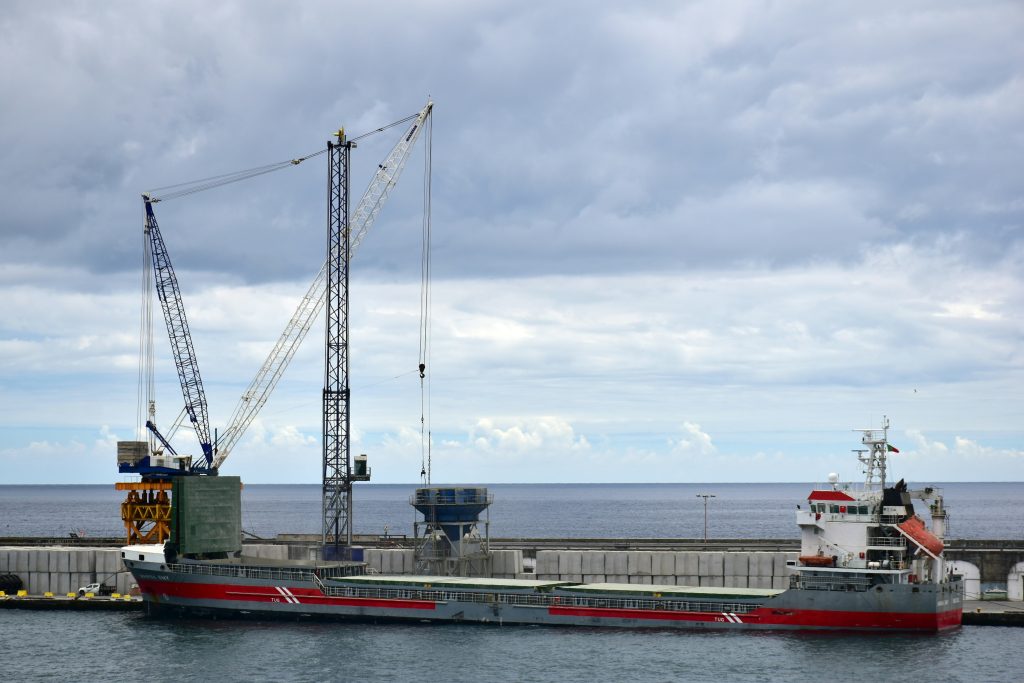Bill of Lading Tracking: A Comprehensive Guide to Shipment Tracking
Understanding Bill of Lading Tracking
To track your shipment using the bill of lading:
- Locate your bill of lading number
- Visit the carrier’s website or a third-party tracking platform
- Enter the bill of lading number in the designated tracking field
- Click ‘Track’ to view your shipment’s current status and location
Bill of Lading Number Tracking: A Deeper Dive
Bill of lading number tracking is the most common method of tracking shipments in international trade.
What is a Bill of Lading Number?
A bill of lading number is a unique identifier assigned to each shipment. It typically consists of a combination of letters and numbers and is used to track the shipment throughout its journey.
Key Features of Bill of Lading Number Tracking
- Shipment Status: Know whether your goods are in transit, at a port, or delivered
- Location Updates: Track your shipment’s journey from origin to destination
- Estimated Time of Arrival (ETA): Get updates on when your shipment is expected to arrive
- Event History: View a detailed timeline of your shipment’s movements and handling

B/L Tracking: Understanding the Abbreviations
You might come across terms like “B/L tracking” or “BL tracking” in your shipping operations. These are simply abbreviations for bill of lading tracking.
B/L Tracker: Tools for Tracking Your Shipments
A B/L tracker is a tool or platform that allows you to input your bill of lading number and receive updates on your shipment. Many shipping lines and third-party logistics providers offer B/L trackers on their websites.
Bill of Lading Lookup: Finding Your Shipment Information
Bill of lading lookup refers to the process of retrieving detailed information about your shipment using your bill of lading number.
What Information Can You Find with a Bill of Lading Lookup?
- Shipper and Consignee Details
- Description of Goods
- Vessel Information
- Ports of Loading and Discharge
- Current Status and Location of the Shipment
Track Bill of Lading Number: Best Practices
To get the most out of bill of lading tracking, consider these best practices:
- Keep Your Bill of Lading Number Handy: Store it in a safe, easily accessible place
- Check Regularly: Monitor your shipment’s progress frequently
- Set Up Alerts: Many tracking systems allow you to set up notifications for important milestones
- Verify Information: Cross-reference tracking data with other shipping documents
Bill of Lading Tracking Online: The Digital Advantage
In today’s digital age, bill of lading tracking online has become the norm, offering several advantages over traditional methods.
Benefits of Online Bill of Lading Tracking
- 24/7 Access: Check your shipment status anytime, anywhere
- Real-Time Updates: Get the most current information about your shipment
- Integration with Other Systems: Many online tracking systems can be integrated with broader supply chain management tools
- Paperless Process: Reduce reliance on physical documents
Trace Bill of Lading: Understanding the Journey
When you trace a bill of lading, you’re essentially following the path of your shipment from its origin to its destination.
Key Milestones in Tracing a Bill of Lading
- Booking Confirmed: Your shipment is registered in the carrier’s system
- Container Loaded: Your goods are loaded into a container at the origin
- Vessel Departure: The ship carrying your container leaves the origin port
- Transshipment (if applicable): Your container is transferred to another vessel
- Vessel Arrival: The ship reaches the destination port
- Customs Clearance: Your shipment goes through customs procedures
- Final Delivery: Your goods are delivered to the final destination
MBL Tracking: Master Bill of Lading
MBL tracking refers to tracking using a Master Bill of Lading number. This is particularly relevant for consolidated shipments.
What is a Master Bill of Lading?
A Master Bill of Lading (MBL) is issued by the main carrier to the freight forwarder in a consolidated shipment. It covers the entire shipment from the port of loading to the port of discharge.
How MBL Tracking Differs from Regular B/L Tracking
- Covers Multiple Shipments: An MBL might represent several individual shipments
- Used by Freight Forwarders: MBL tracking is often used by logistics professionals rather than end customers
- Provides a Broader View: Offers an overview of the entire consolidated shipment
BOL Tracking: Bill of Lading in Domestic Shipping
While we’ve primarily discussed international shipping, it’s worth noting that is also crucial in domestic transportation.
BOL vs B/L: Understanding the Difference
- BOL typically refers to a Bill of Lading used in domestic shipping
- B/L is more commonly used in international ocean freight
Key Features of BOL Tracking
- Pickup and Delivery Information
- Route Details
- Driver and Vehicle Information
- Estimated Delivery Date
Track and Trace Bill of Lading: Comprehensive Shipment Monitoring
“Track and trace” is a term often used in logistics to describe the process of monitoring the movement of goods. When applied to bills of lading, it offers a comprehensive view of your shipment’s journey.
What Does Track and Trace Include?
- Location Tracking: Where your shipment is at any given time
- Status Updates: The current state of your shipment (e.g., in transit, cleared customs, out for delivery)
- Historical Data: A record of all events and movements related to your shipment
- Documentation: Access to relevant shipping documents
Bill of Lading Tracking by Container Number
Sometimes, you might need to track your shipment using a container number instead of a bill of lading number.
How to Track by Container Number
- Locate your container number (typically starts with four letters followed by seven numbers)
- Visit the carrier’s website or a container tracking platform
- Enter the container number in the tracking field
- View the tracking results
Advantages of Tracking by Container Number
- More Specific: Especially useful when multiple containers are listed on a single bill of lading
- Direct Link to Physical Goods: Container numbers are directly associated with the physical container carrying your goods
Track Vessel by Bill of Lading
In some cases, you might want to track the vessel carrying your goods rather than just the container or shipment itself.
How to Track a Vessel Using Your Bill of Lading
- Find the vessel name on your bill of lading
- Use a vessel tracking website or the carrier’s tracking tool
- Enter the vessel name to see its current location and estimated arrival times at various ports
Benefits of Vessel Tracking
- Broader Context: Understand where your shipment is in relation to the overall voyage
- Predict Delays: Identify potential issues like port congestion or weather-related delays
- Plan Ahead: Better anticipate when your goods will arrive for improved logistics planning

The Future of Bill of Lading Tracking
As technology continues to evolve, so too will the methods and capabilities of tracking. Here are some potential future developments:
- Blockchain Integration: Improved security and transparency in tracking data
- Internet of Things (IoT): More detailed tracking of shipment conditions (temperature, humidity, shock)
- Artificial Intelligence: Better predictive capabilities for ETAs and potential issues
- Augmented Reality: Visualization of shipment locations and routes in real-world contexts
Conclusion: Maximizing the Benefits of Bill of Lading Tracking
Bill of lading tracking is a powerful tool for managing your shipments and optimizing your supply chain. Whether you’re using bill of lading number tracking, B/L tracking, or more advanced track and trace systems, understanding how to effectively use these tools can give you a significant advantage in today’s fast-paced, globally connected marketplace.
Remember, in the world of international trade and logistics, information is power. tracking puts that power at your fingertips, allowing you to navigate the complexities of shipping with confidence. Whether you’re a small business owner managing occasional shipments or a large corporation with complex supply chains, mastering bill of lading tracking can help you improve efficiency, reduce risks, and ultimately provide better service to your customers.
As you move forward with your shipping operations, consider how you can best leverage to meet your specific needs. With the right approach, these tracking services can become more than just a way to locate your shipments – they can be a key driver of success in your logistics operations.
